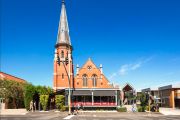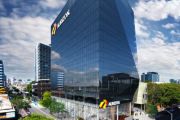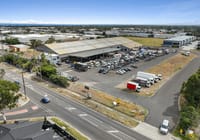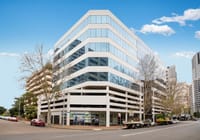
Vestey family puts ‘tariff-resistant’ winery on sale with $20m hopes
The UK’s wealthy Vestey family has put The Lane Vineyard, a mid-sized winery in the Adelaide Hills, back on the market after it failed to sell last year, counting on a strong grape harvest and relative immunity to newly imposed US tariffs to clinch a $20 million asking price.
The family that once owned Australian cattle stations covering more land than Europe has renewed its push to sell the winery with 42 hectares under grape – nearly two-thirds of it with chardonnay, sauvignon blanc and semillon – that doesn’t export to the US or China.

“That’s a big plus for our business,” The Lane chief executive Jared Stringer told The Australian Financial Review. “We’re predominantly domestic-focussed brand.”
Uncertainty created by the capricious Trump administration’s tariff policy compounds existing difficult conditions facing Australia’s wine producers, already battling high borrowing and input costs and weakened consumer demand at home.
The US is the Australian industry’s second-largest market by volume and third-largest by value.
While well below the value of the $3.3 billion beef, $1.7 billion gold, and $1.6 billion pharmaceutical exports to the US in FY24, Australia’s wine exports are significant. Figures from industry body Australian Grape & Wine valued exports for calendar year 2024 at $325 million, ahead of steel and aluminium.
Casella Family Brands, which owns the country’s largest-selling export wine brand, Yellow Tail, declined to comment.

ASX-listed Treasury Wine Estates last week sought to reassure investors that any impact would be minimal, as 85 per cent of gross profit less advertising and marketing costs of its Americas division came from US-sourced grapes.
It was too early to assess the commercial impact, but the tariffs would make Australian wine more expensive in the US market, industry body Australian Grape & Wine said.
“We’re not expecting it to be something that would preclude trade with the US, but it does make our wines more expensive,” a spokeswoman said.
The wine-producing regions most exposed to the US market, according to the industry body, are South-Eastern Australia, SA – in particular the red wine-heavy areas of McLaren Vale and the Barossa Valley, followed by WA’s Margaret River.
Agents in areas such as NSW’s Hunter Valley, were quick to point out their producers were smaller scale, more tied to domestic lifestyle tourism and less exposed to exports. “It’s another knock the industry doesn’t need but won’t have a huge effect on the Hunter,” Cessnock real estate agent Cain Beckett said.
A 10 per cent tariff was unlikely to have a material impact on winery valuations, the Australian Grape & Wine spokeswoman said.
After three years of poor seasons, Adelaide Hills wineries have enjoyed a big harvest. It’s prompted selling agents Langley & Co to update The Lane’s information memorandum to predict an 18 per cent jump in bottled wine sales this year to 63,891 dozen, from 53,535 dozen in FY24.
The Lane had plans with developer Luxury Lodge Group for a $10 million lodge and wellness centre, but it was rejected by Adelaide Hills Council and won’t go ahead, Stringer said.
A sale of The Lane, which the Vestey family acquired in 2011, would dispose of the final Australian asset owned by two now-diverging branches of the family with their business interests.
Vestey Holdings owns The Lane. Its chief executive is George Vestey, whose own interests revolve around food sourcing and supply companies. His second cousin, and Vestey Holdings chairman, Lord William Vestey, has his own business interests in agriculture, such as sugar cane and beef.
The family, whose name once dominated Australian food production, forms a key part of the country’s history.
It owned NT’s Wave Hill cattle station, where the 1966 walk-off by poorly paid Aboriginal workers triggered the first legislation allowing First Nations people to claim land title.
George Vestey wholly owns Delatite Winery in Victoria’s Mansfield, which has also been on sale since last year with an $8 to $10 million price guide.
“We only made it to two of the planned three, four winery businesses we had set out to assemble in our original strategy, as the level of investment required in each of the businesses was greater than anticipated,” he said.
“Eventually, the family shareholders questioned the purpose of having two wine businesses that were quite remote from our core business activities, hence the sad decision to sell.”











